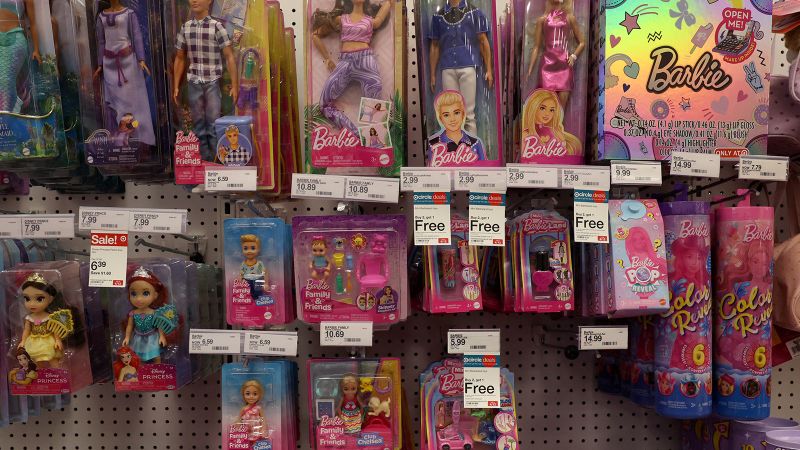In recent developments regarding the toy industry, President Donald Trump’s trade war has started to have tangible effects on American consumers, particularly with respect to the prices of children’s toys. Last week, he issued a warning to the public that the extensive trade tariffs he implemented could lead to increased costs for consumer goods, specifically suggesting that children’s dolls might soon become “a couple bucks more.” This prediction seems to be materializing as major toy manufacturers begin to adjust their pricing strategies in response to the trade environment.
One notable company affected by these tariffs is Mattel, the leading toy manufacturer known for producing iconic brands like Barbie and Polly Pocket. Recently, Ynon Kreiz, the CEO of Mattel, addressed the issue of price increases during an interview with the Wall Street Journal, confirming that the company has made plans to raise prices on American-made toys due to these tariffs. Kreiz indicated that the current state of the market is very uncertain, saying, “It’s very volatile right now,” indicating that the company is carefully plotting various scenarios to determine the most appropriate course of action moving forward.
The backdrop of this situation is the ongoing trade war, where tariffs imposed by the Trump administration—reportedly as high as 145% on certain imports from China—have placed significant financial strain on the toy sector. The implications are dire, as nearly 80% of toys sold in the United States are manufactured in China, according to the Toy Association. This heavy reliance on Chinese manufacturing puts American families in a precarious situation where building a modest collection of toys becomes increasingly unaffordable, likening the situation to a luxury. The CFO of Mattel, Anthony DiSilvestro, reflected on the fiscal impact during a recent earnings call, revealing that the company expects to absorb costs upwards of $270 million this year as a direct result of the tariffs.
Evidence of price hikes is already surfacing. According to a pricing analysis by Telsey Advisory Group, one specific Barbie doll sold at Target saw an astonishing increase of 42.9%, skyrocketing to $14.99 in just a week’s time. This surge is among the most significant price hikes that the consumer research firm has documented, pointing to increasing costs across the industry. Kreiz revealed that Mattel is considering several scenarios to manage the crisis and estimates that 40% to 50% of their products will still be priced under $20. Despite these challenges, he firmly believes that zero tariffs for toys and games globally would provide the maximum access to affordable play for children and families alike.
Despite the pressures from tariffs, Mattel announced that their earnings for the first quarter of the year were not negatively impacted. In a strategic move to mitigate potential losses, the company is planning to diversify its manufacturing supply chain away from China, hinting at adjusting their pricing strategies within the U.S. market. Kreiz previously stated that Mattel sources its products from seven different countries, aiming to have less than 40% of toy production in China by 2025. Furthermore, the goal is to reduce U.S. imports from China to less than 15% by 2026 and under 10% by 2027, with plans to shift the production of 500 toys away from Chinese factories.
Additionally, the uncertainty surrounding consumer behavior and spending has prompted Mattel to pause its full-year guidance for 2025. This cautious stance underscores the challenges companies face amid the evolving landscape of trade and tariffs, as industry leaders attempt to navigate significant ambiguity, particularly in the crucial holiday shopping season that typically boosts toy sales. Such decisions can create trepidation among investors and analysts, and when companies suspend their financial guidance, it is a signal of instability that is typically met with apprehension in the market.
In summary, the toy industry, particularly companies like Mattel, are grappling with the ramifications of the ongoing trade war, facing the dual challenges of rising costs and shifting manufacturing practices. The result may lead to higher prices for American consumers, which could significantly impact children’s access to toys amidst a landscape of uncertainty.



